Blog Post 6: Kaida, Alyssa, Meghan
We’ve been told several times on this trip that we were fortunate to see the rarities we have. From the goliath herons and bat-eared fox on Crescent Island on Lake Naivasha to the leopard and two carnivore meals at Maasai Mara, our exploration of the Kenyan ecosystems has been nothing short of spectacular. After seeing rainfall pass us by over the savannah and rolling thunderclouds on the horizon, today we were lucky enough to experience a rainstorm firsthand.
The morning began early for some and late for others. Inspired by yesterday’s constellations, Allen woke before sunrise to snap pictures of the stars. Alyssa noted many constellations unique to the southern hemisphere, such as Volans (the flying fish), Pavo (the peacock), Tucana (the tucan), Grus (the crane), and Chamaeleon (the chameleon). Unfortunately, clouds were covering Cetus the Whale (Alyssa’s most anticipated constellation), foreshadowing the rain that would befall us later in the day. The early-morning stargazing was capped with stunning views of Jupiter and a satellite whizzing by overhead.
By late morning, the debates were underway, with Team A (Andrea, Sol, and Grace) discussing in situ and ex situ strategies for conservation. Excellent points were made on both sides, however the debate resulted with the day’s only unanimous vote in support of ex situ methods—but only in combination with in situ practices. After another tamu (delicious!) lunch, several cows broke into our camp, running amok before their herder was able to wrangle them back to their pasture. With that brief (and entertaining) interlude, Team B (Meg, Kaida, and Alyssa) continued the debates, exploring the controversial topic of trophy hunting as a means of supporting local communities and conservation. Next up was Team C (Allen, Rachael, and May), who led an engaging discussion about international programs, such as debt-for-nature swaps, being a valuable conservation tool. Last but not least, Team D (Steve, Madeleine, and Arjun) rounded out the debates by parlaying the value of international treaties and their efficacy in protecting nature on a global scale, which resulted in the most dramatic flip-vote of the day.
After dinner, we finished the day with yet another rousing lecture from Steve on human demography and conservation, which wonderfully complimented our debate topics. From the humble beginnings of human populations, to present day distribution and impact, and finally projections of our species into future generations, we were left with much to consider over the duration of our 8-hour bus ride to Kakamega tomorrow.
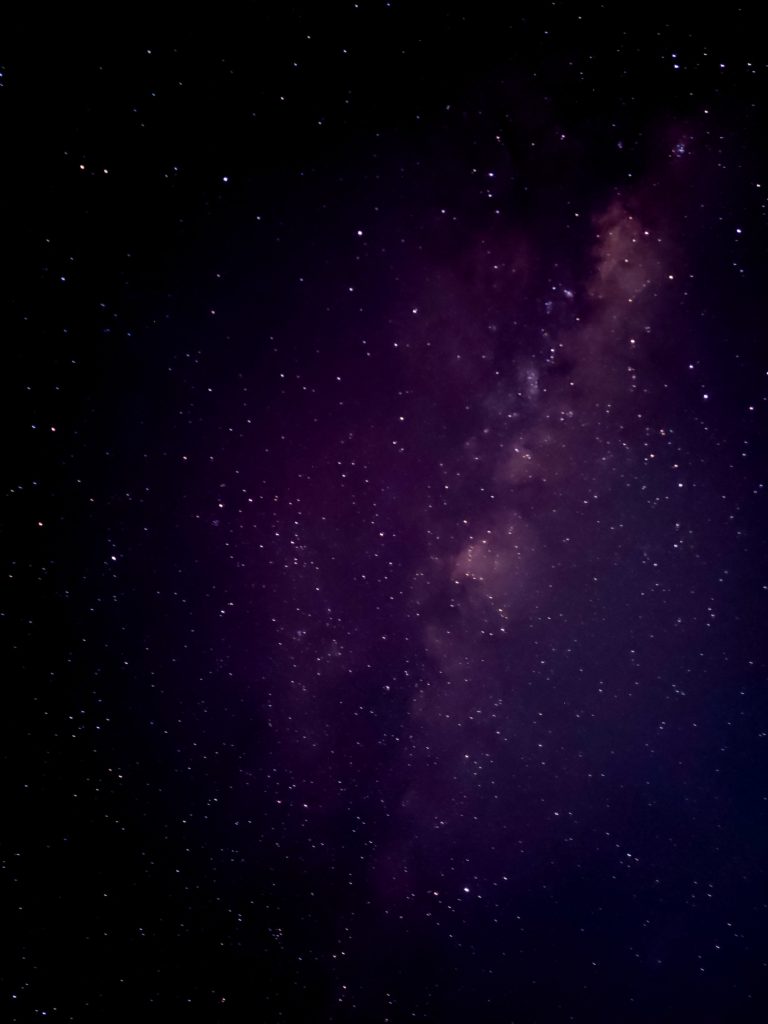
Kenyan night sky. Photo Allen Tian
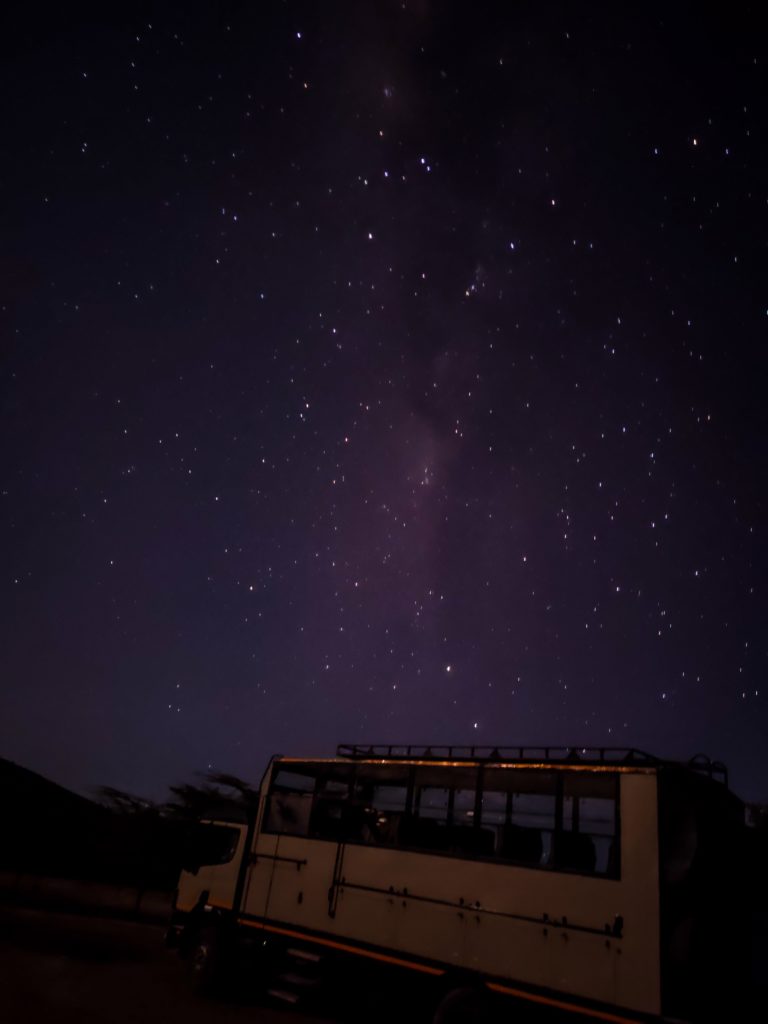
Bunduz truck agains tight sky. Photo by Allen Tian.
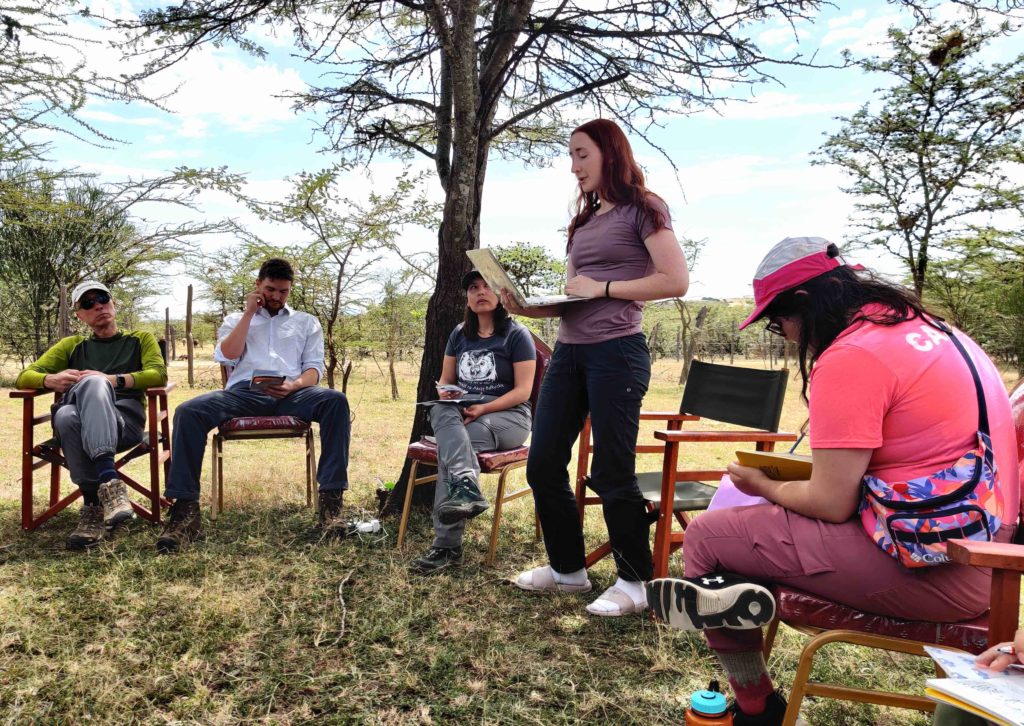
Grace delivering her opening statements in a debate on ex situ conservation
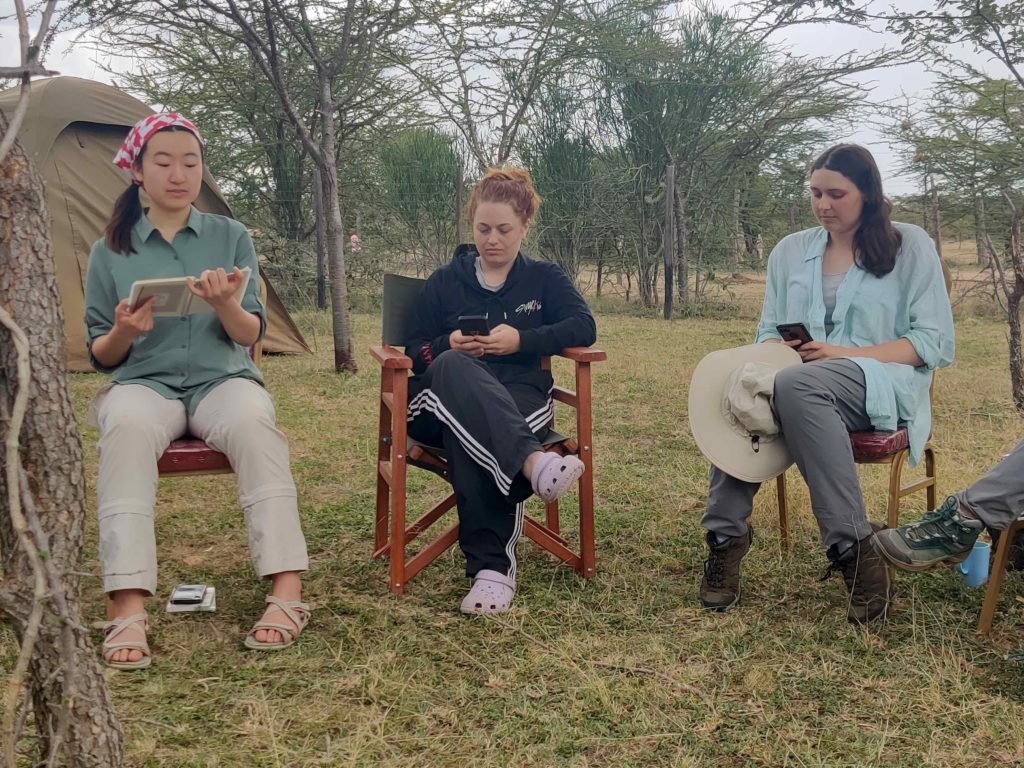
Kaida, Meg, and Alyssa debate
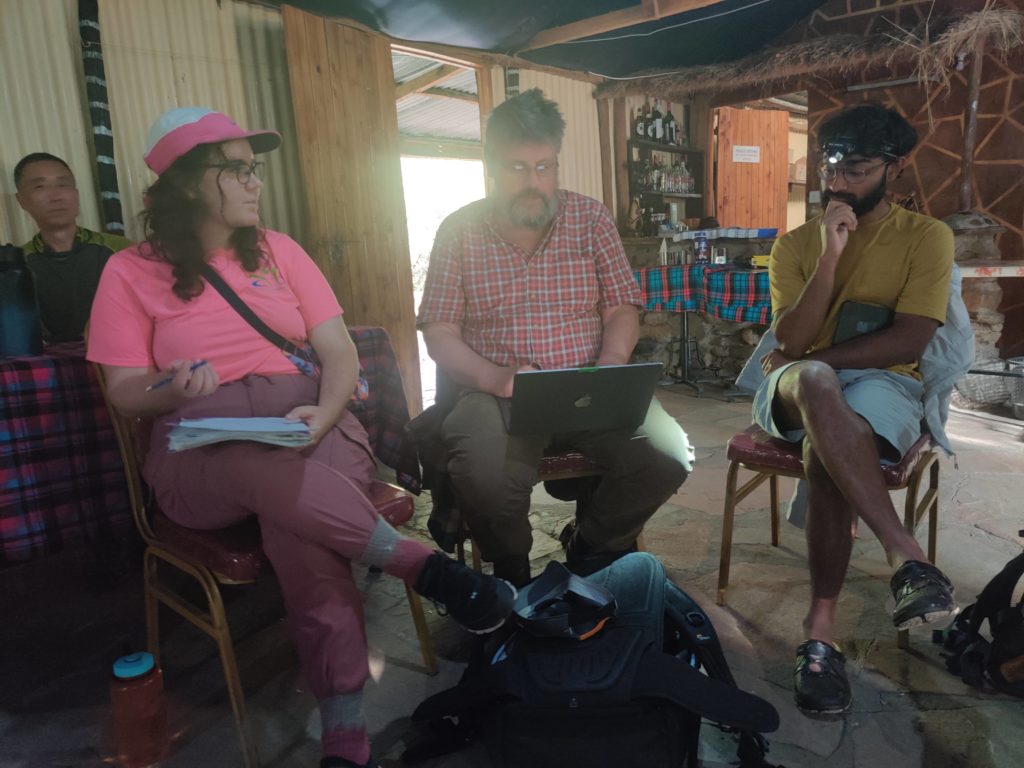
Madeleine, Arjun and Steve debate the value of international conventions.
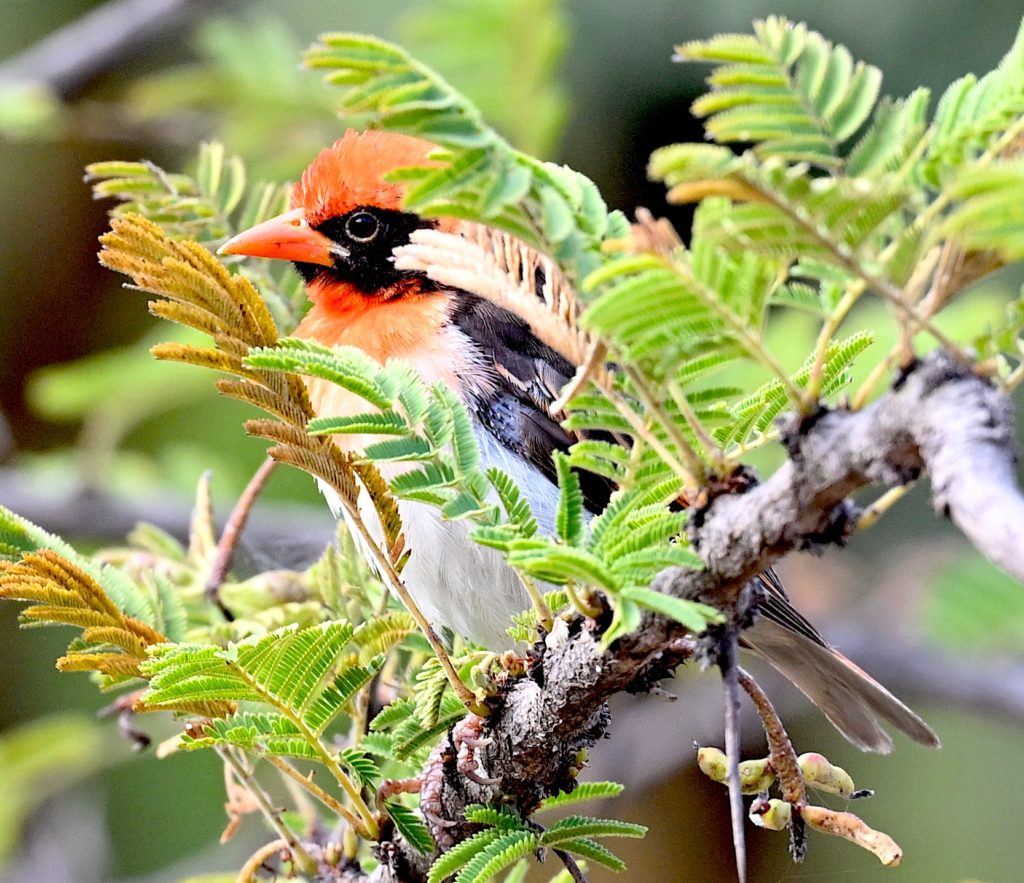
red-headed weaver, one of many species in the scrub around camp
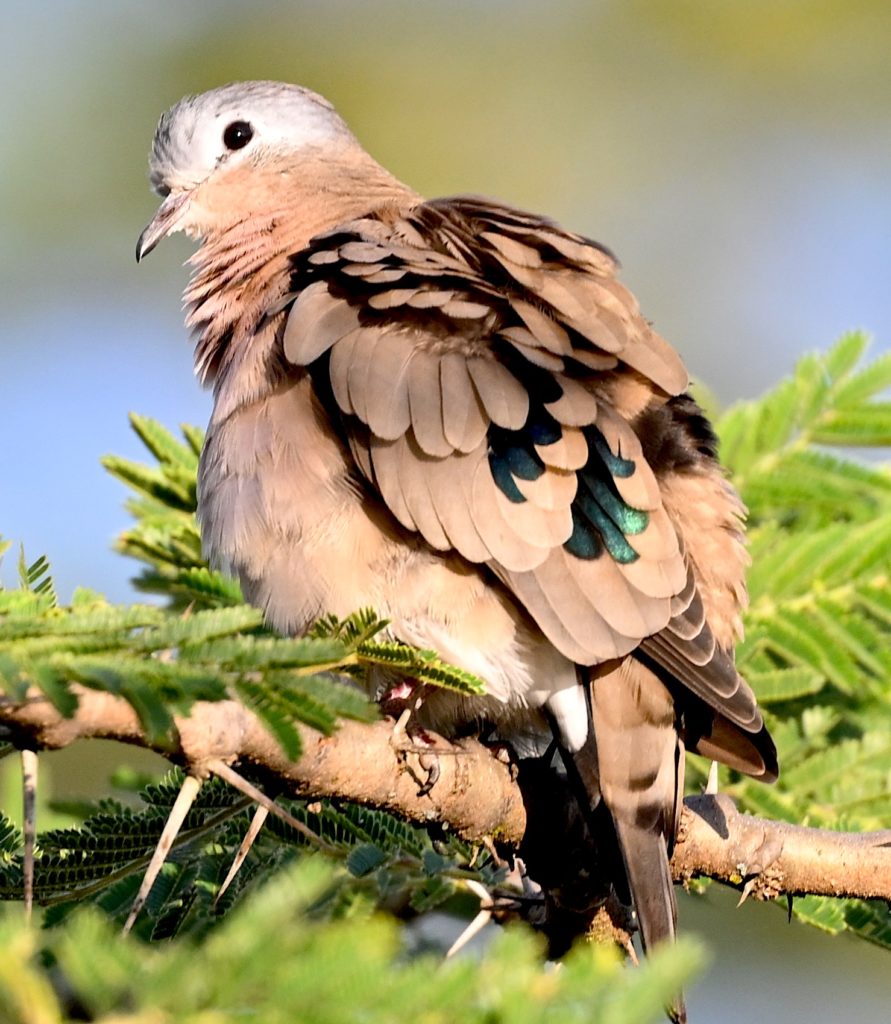
emerald-spotted wood-dove
An earlier post mentioned star gazing, and I was really curious to know what the night sky looked like there, and this post answered that. Now I want to learn more about the constellations that were mentioned. Allen’s night sky photos are impressive!
The debates sounded like they were really thought-provoking — so interesting that even the cows wanted to get in on the action?? That’s quite the image of cows running amok through the camp!
Thank you so much for the lovely pictures of the night sky. Even looking up at the stars is a magical experience!
I’m so glad you’ve been able to see so many rarities. That’s a gift.
I’m also grateful to read about your very interesting, animated and thought-provoking discussions. I know they are certainly making me examine what I know (and what I was taught), and definitely curious to learn more!